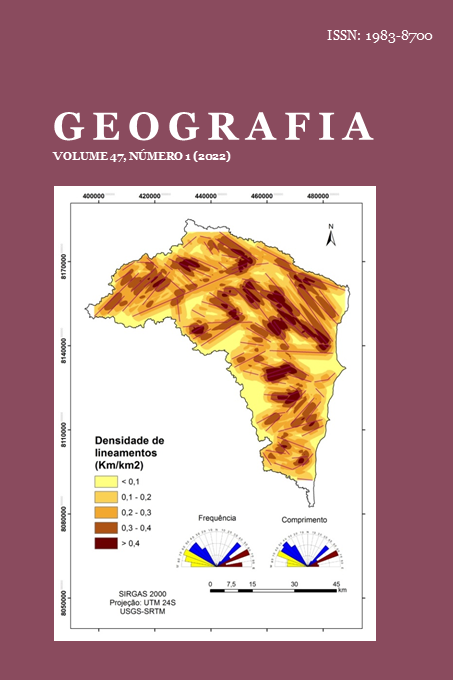THE SPACE THROUGH RELIGION: SPATIAL PERCEPTION AND REPRESENTATION AMONG ADEPTS OF CANDOMBLÉ AND EVANGELICALS
DOI:
https://doi.org/10.5016/geografia.v47i1.16749Abstract
We present in this article the perception and spatial representation according to two religious groups, the adepts of candomblé from Terreiro do Cobre and evangelicals from Igreja Universal. Unveiling the religion as symbolic form, acting, through its cosmogony, on the ways of being from its adepts and on the structuration of reality, we’ll see the distinct ways how these groups experience, perceive and represent the Engenho Velho da Federação (Salvador-BA), neighborhood where both of temples are situated. A deep discussion about spatial perception and representation is then undertaken. In the analysis of the results, besides of interviews and field observation, we’ll use the mental maps constructed by our interviewees. The maps embody the distinct ways of living, perceiving and meaning the neighborhood. And this set – the lived, the perceived and the meanings – embodies the respectively cosmogonic values.
Downloads
Published
Issue
Section
License
The authors maintain the copyright and grant GEOGRAFIA the right of first publication, with the articles simultaneously licensed under the Creative Commons BY 4.0 License, which allows sharing and adapting the articles for any purpose, as long as appropriate credits and provisions of image rights, privacy or moral rights. Other legal attributions can be accessed at: https://creativecommons.org/licenses/by/4.0/legalcode.en.
Geography, Rio Claro, SP, Brazil - eISSN 1983-8700 is licensed under the Creative Commons BY 4.0 License.





